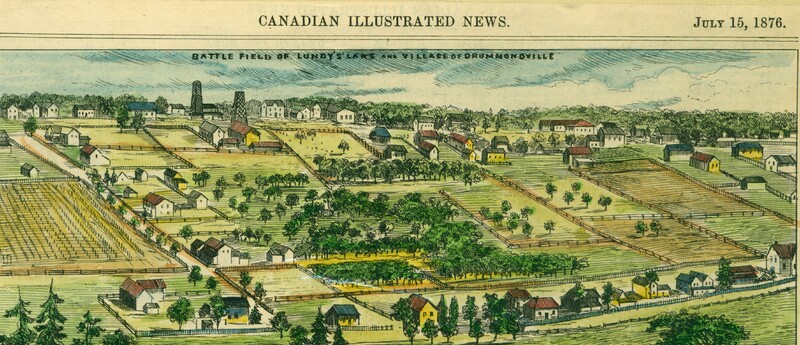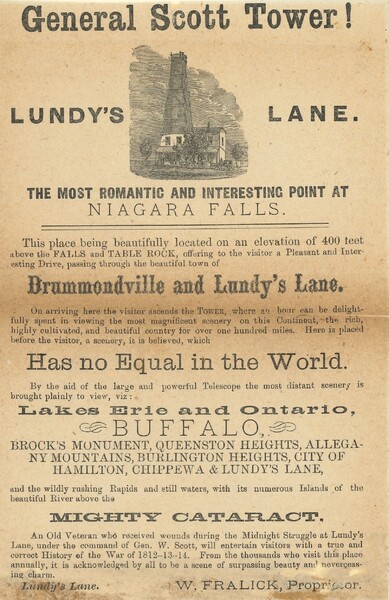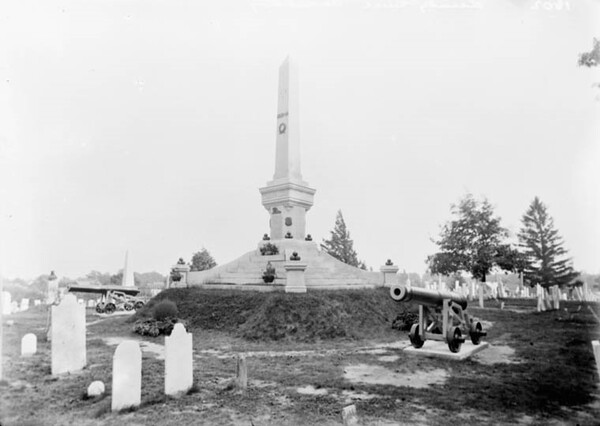Battlefield and Memorial
In the decades that followed, War of 1812 battlefields became popular tourist destinations. They were of interest to Americans, Canadians, and the British, and the Lundy's Lane battlefield proved to be especially popular. Enterprising citizens capitalized on this trend by building observation towers that offered an impressive view of the battlefield and surrounding area, including Niagara Falls. Veterans of the battle would provide visitors with a first-hand account of the action.
A handbill advertising one of these observation towers notes that "an Old Veteran who received wounds during the Midnight Struggle at Lundy's Lane, under the command of Gen. W. Scott, will entertain visitors with a True and Correct History of the War of 1812-13-14. From the thousands who visit this place annually, it is acknowledged by all to be a scene of surpassing beauty and never ceasing charm".
After the American Civil War ended in 1865, battlefield tourism in Niagara declined. The site was largely ignored and fell into disrepair. Dismayed by the state of the battlefield and the nearby Drummond Hill cemetery, Reverend Canon George Bull, President of the Lundy's Lane Historical Society, worked to restore and commemorate the site. A Soldier's Monument was erected by the Canadian government and unveiled on July 25, 1895, the 81st anniversary of the Battle of Lundy's Lane. Beneath the monument are two oaken caskets containing the bones of British soldiers found on the battlefield.
The battlefield was declared a National Historic Site in 1937. It was deemed significant because the British retained possession of the hill at Lundy's Lane despite valiant American efforts to dislodge them, essentially ending the American offensive in Upper Canada. It was also significant for being the bloodiest battle of the War. The battlefield continues to be visited by tourists and in recent years has been more clearly marked by a prominent overhead sign spanning Lundy's Lane near Drummond Road.


